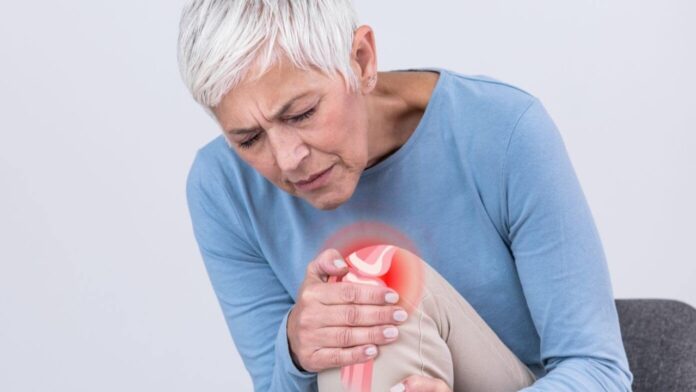As individuals age, their bodies undergo a multitude of changes, particularly in bone density, which can lead to osteoporosis—a silent disease that significantly increases the risk of fractures and other health complications. This article delves into the effects of aging on bone health, the nature of osteoporosis, its symptoms, preventative strategies, treatment options, and insights from top healthcare professionals.
Understanding Osteoporosis
Osteoporosis is a condition characterized by a reduction in bone density and strength, making bones more susceptible to fractures. It is often termed a “silent disease” because it develops gradually over many years without any noticeable symptoms until a fracture occurs. According to the International Osteoporosis Foundation (IOF), osteoporosis affects approximately 200 million women worldwide, particularly after menopause due to hormonal changes that lead to bone density loss.
The underlying cause of osteoporosis is multifaceted, involving genetics, hormonal changes, nutritional deficiencies, and lifestyle factors. As individuals age, particularly postmenopausal women, the rate of bone resorption (the process by which bone is broken down) begins to exceed the rate of bone formation, leading to a net loss of bone mass. This imbalance is primarily driven by decreased levels of estrogen, which plays a crucial role in maintaining bone density.
Symptoms of Osteoporosis
Osteoporosis can remain asymptomatic until a significant event, such as a fracture, occurs. Common signs and symptoms may include:
- Height Loss: A gradual decrease in height can occur due to the compression of vertebrae in the spine.
- Back Pain: Persistent pain in the back may indicate a spinal fracture or compression.
- Stooped Posture: A noticeable curvature of the spine, often referred to as kyphosis or a “dowager’s hump.”
- Fractures from Minor Falls: Individuals may experience fractures in the hip, wrist, or spine from falls that would not typically cause injury in healthier bones.
Strategies for Bone Health
Maintaining bone health is critical for older adults, and several strategies can be employed to reduce the risk of osteoporosis:
Nutrition
- Calcium Intake: Adequate calcium intake is vital for bone health. Adults aged 51 and older should aim for 1,200 mg of calcium daily. Dairy products, leafy green vegetables, fortified foods, and fish with bones are excellent sources.
- Vitamin D: Vitamin D is essential for calcium absorption and bone metabolism. Older adults should aim for 800-1,000 IU of vitamin D per day, which can be obtained through sunlight exposure, dietary sources like fatty fish, fortified dairy products, and supplements if necessary.
- Protein: Sufficient protein intake is also important for bone health. Studies suggest that protein contributes to the formation of bone mass and helps maintain bone strength.
Physical Activity
- Weight-Bearing Exercises: Activities like walking, jogging, dancing, and weightlifting promote bone strength by stimulating bone formation.
- Balance and Flexibility Exercises: Tai Chi, yoga, and balance training can help reduce the risk of falls by improving stability and coordination.
- Consistency: A regular exercise routine, ideally combining strength training, flexibility exercises, and aerobic activities, is recommended for optimal bone health.
Lifestyle Changes
- Avoid Smoking: Smoking is detrimental to bone health, as it interferes with the body’s ability to absorb calcium and increases the risk of fractures.
- Limit Alcohol Consumption: Excessive alcohol intake can lead to bone loss and an increased risk of falls. Moderation is key; women should limit alcohol to one drink per day, and men to two.
- Maintain a Healthy Weight: Both underweight and overweight conditions can negatively impact bone health. Maintaining a healthy weight supports overall body strength and reduces the risk of falls.
Regular Screenings
- Bone Density Tests: The National Osteoporosis Foundation recommends bone density testing for women aged 65 and older and for men aged 70 and older, or earlier for those at high risk. These tests can help assess bone health and the need for preventative measures.
Treatment Options
For those diagnosed with osteoporosis, several effective treatment options are available:
- Medications: Commonly prescribed medications include:
- Bisphosphonates: These drugs help to slow down bone loss and reduce the risk of fractures. Research indicates that bisphosphonates can reduce vertebral fractures by up to 50%.
- Denosumab: This medication works by inhibiting the cells that cause bone breakdown.
- Teriparatide: This is a form of parathyroid hormone that stimulates new bone growth.
- Success Rates: Studies have shown that osteoporosis treatments can significantly reduce fracture risks. For example, bisphosphonates have been effective in reducing hip fractures by up to 40% in high-risk populations.
Consult with Specialists
Engaging with healthcare professionals who specialize in osteoporosis, such as orthopedic surgeons and endocrinologists, is crucial for tailored treatment plans. Institutions such as the Mayo Clinic and Cleveland Clinic are known for their advanced osteoporosis research and treatment programs, providing patients access to cutting-edge therapies and ongoing clinical trials.
Conclusion
Understanding osteoporosis and implementing preventative measures can dramatically enhance bone health and quality of life in older adults. The impact of aging on bone density is significant, but with proper nutrition, exercise, lifestyle modifications, and medical interventions, individuals can mitigate the risks associated with this condition. Early diagnosis and intervention are crucial for reducing the risk of fractures and improving overall well-being. Regular consultations with healthcare providers and adherence to treatment plans can empower older adults to maintain strong, healthy bones well into their later years.
Key Takeaways
- Osteoporosis is a prevalent condition that significantly affects bone health in older adults, particularly postmenopausal women.
- Maintaining bone health involves a combination of proper nutrition, regular physical activity, lifestyle changes, and routine screenings.
- Various effective treatment options are available to manage osteoporosis and reduce fracture risks.
- Consulting with specialized healthcare providers is essential for personalized care and the latest treatment options.
By staying informed and proactive about bone health, older adults can take significant strides towards living healthier, fracture-free lives.


